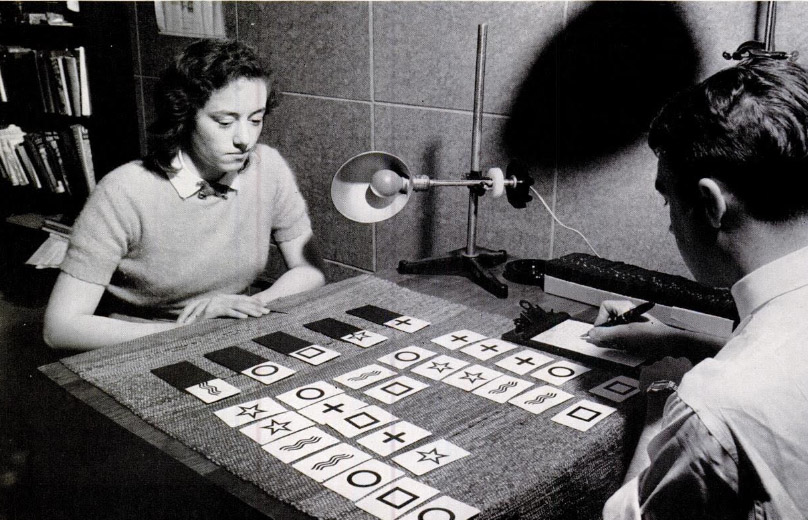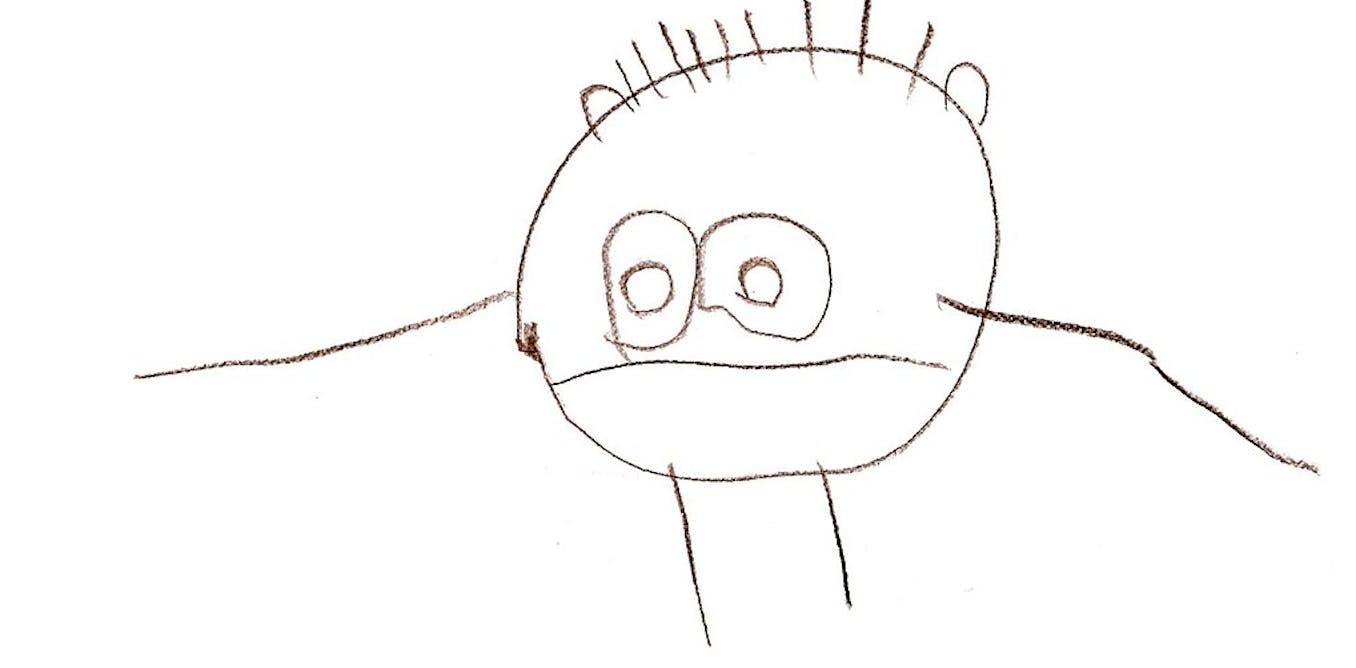There is a hidden cause behind a fun little demonstration of an ostensibly paranormal experience that I often include in public talks on anomalistic psychology, especially when I have a reasonably large audience. I explain to my audience that an important part of proper skepticism is to always be open to the possibility that you may be wrong. In that spirit, I tell the audience that I would like to do a little experiment with them to see just how psychic they are. I tell them that I am going to try to telepathically send a simple message from my mind to theirs. “I’m thinking of a number between one and ten,” I say. “Not three, because that’s too obvious. I want you to make a mental note of the first number that comes into your mind now!”
I then explain that, with such a large audience, we would expect around 10 percent of them to guess the number correctly just by chance, so we should only get ecstatically excited if considerably more than 10 percent of the audience get it right. I then, apparently somewhat nervously, ask, “Did anybody think of the number seven? If you did, raise your hand.” With a large audience, I can, in fact, be very confident that around a third of them will put up their hand.
Feigning surprise, I will try another, slightly more complicated example. “This time I’m thinking of a two-digit number between one and fifty. They are both odd digits and they are not the same. So, it could be fifteen — one and five, both odd digits, not the same — but it could not be eleven — both odd digits but they are the same. What is the first number that fits that description that comes into your mind now?”
I then ask, as if expecting no one to have got it right this time, “Did anyone think of the number thirty-seven?” Once again, about a third of the audience will put up their hand. I will then add, “Did anyone think of thirty-five?” About a further quarter of the audience will raise their hand. “Sorry, that was my fault,” I explain. “I thought of thirty-five first and then I changed my mind.”
What is going on here? Any audience members who believe in ESP may well think that it has just been demonstrated. More skeptical members may be at a loss to explain what they have seen (and possibly directly experienced). Is it possible that I had simply conspired with all those members of the audience who got it right by telling them in advance to raise their hands in response to my questions? That would seem unlikely. Was it just a coincidence that so many more people guessed correctly than would be expected on the basis of chance alone? Again, possible but extremely unlikely.
The actual explanation is a phenomenon that psychologists refer to as population stereotypes. For most people faced with this task, when they are asked to make a mental note of the first number that comes into their head, they assume this is pretty much a random process. Therefore, they expect the frequencies of response to be more or less equal across the range of response options. In fact, this is not what happens. Responses tend to cluster in reliable and predictable ways, especially with large audiences.
In the first example, about a third of people will choose seven regardless of whatever number I may be thinking of (especially as I have ruled out three as a valid response, which otherwise would also be a popular choice). In the second example, about a third will pick 37 and about a further quarter will choose 35. Note that in neither example do the response rates approach 100 percent, but that is not a problem as people do not expect telepathy to be 100 percent reliable.
There are several other examples of population stereotypes that could be used to fool (at least some of) the unwary that you possess amazing telepathic powers. Tell them your telepathic target is two simple geometric forms, one inside the other. Around 60 percent will choose circle and triangle. Tell them you are thinking of a simple line drawing. Around 10 to 12 percent will draw a little house. It makes for a fun demonstration of the fact that not everything that looks like paranormal actually is. But would anyone ever seriously try to pass off such a demonstration as really involving telepathy?
The answer is yes. For example, in the mid-1990s Uri Geller took part in a TV program called Beyond Belief, presented by David Frost, in which, it was claimed, various paranormal phenomena would be demonstrated live for the millions of viewers at home. I was one of those viewers. Uri demonstrated his alleged telepathic powers by supposedly transmitting a message to viewers. Uri had chosen one of four symbols that were presented at the bottom of the screen in the following order: square, star, circle, cross. As the camera slowly zoomed in on his face, Uri said: “I’m visualizing the symbol in my mind . . . and you people at home, millions of you, I’m actually communicating now with millions of people, maybe eleven, twelve, thirteen million people. Here goes. I’m transmitting it to you. I’m visualizing it. Open up your minds. Try to see it. Try to feel it. I’m really strongly passing it to you! One more time . . . okay.” By this point, the upper half of Uri’s face pretty much filled the screen, with the four symbols still displayed across the bottom of the screen. Viewers were instructed to phone in using one of four different numbers to indicate their guess at Uri’s choice of symbol. Over 70,000 viewers did so.
My days of believing that Uri really did possess amazing psychic abilities were long gone by this stage, and I was therefore watching from the perspective of an informed skeptic. It was pretty easy to come up with nonparanormal explanations for all of the demonstrations featured in the program. With respect to this particular demonstration, I was rather pleased with myself for not only stating in advance what Uri’s telepathic target would be but for also correctly stating the order of popularity of the remaining symbols. It was very lucky for Uri that he chose to “telepathically” transmit the star symbol. It was by far the most popular choice of the viewers, with 47 percent of them indicating that this was the symbol that they had “received.” The second most popular was the circle, with 32 percent of the “votes,” followed by the cross (12 percent) and the square (10 percent). If the guesses were completely random, we would expect about 25 percent for each option, so 47 percent choosing the same symbol as Uri is a massively statistically significant outcome. The probability that almost half of the callers chose this symbol just by chance is astronomically low. So, was this really strong evidence of Uri’s psychic powers?

Readers who are familiar with common techniques used to test for ESP will have recognized that the four symbols used in Uri’s demonstration are taken from the five symbols used on Zener cards (the missing symbol is three wavy lines). The cards are named after the person who designed them, perceptual psychologist Karl Zener. A full deck consists of twenty-five cards, five of each design. In a test of telepathy, a “sender” would take each card from a shuffled deck in turn and attempt to telepathically transmit the image on the card to a “receiver.” The receiver would record their guess of which card the sender was looking at. By chance alone, we would expect around five of the receiver’s guesses to be correct. If the receiver scores significantly more than five, this might be taken as evidence of ESP. However, it has been known for over eight decades that people are more likely to guess certain symbols compared to others. Back in 1939, Frederick Lund asked 596 people to each generate a random sequence of five symbols from the Zener set. By far the most popular symbol was — you’ve guessed it — the star, accounting for 32 percent of the responses compared to the 20 percent that would be expected by chance alone. So, as I said, it really was lucky for Uri that he chose the star as his telepathic target (assuming that it was just luck).
Chris French is Emeritus Professor and Head of the Anomalistic Psychology Research Unit in the Psychology Department at Goldsmiths, University of London. He is a Fellow of the British Psychological Society and of the Committee for Skeptical Inquiry and a Patron of Humanists UK. He is the coauthor of “Anomalistic Psychology: Exploring Paranormal Belief and Experience” and author of “The Science of Weird Shit,” from which this article is excerpted.
This article The psychology of the psychic is featured on Big Think.

The post “The psychology of the psychic” by Chris French was published on 08/30/2024 by bigthink.com




































Leave a Reply